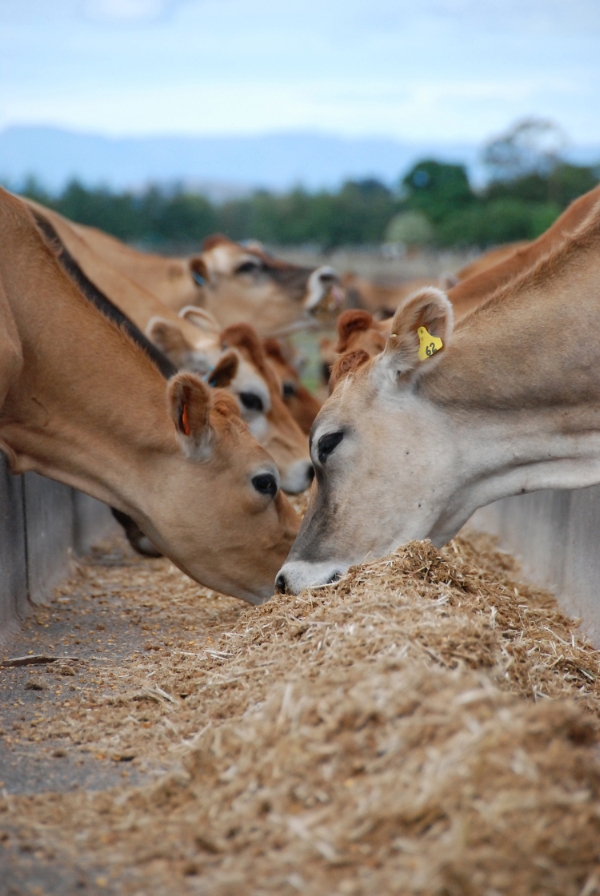Introducing Silage To The Diet
There are 2 main aspects that need to be considered when looking to introduce maize silage into the diet:
- Behavioural adaptation – this is for cows and/or heifers that haven’t been offered maize silage before.
- Ruminal adaptation – this is about the microbial populations to adjust to the new feed and ensure that digestion remains optimal.
Behavioural Adaptation
Behavioural Adaptation
New cows and rising two year old heifers need time with mixed age cows who are more experienced with a maize silage feeding system.
Expose heifers to maize silage several weeks pre-calving – they’ll be settled and consuming maize silage well, in time for calving.
Ruminal Adaptation
Types of rumen microbes that utilise starch are different to those that digest pasture. Microbial populations take 10-14 days to change from pasture to starch digesters. Sudden change to starchy diets may increase risk of ruminal acidosis (“grain overload”). Risk depends on maize silage feeding rates, total levels of dietary fibre (NDF), and on the presence of other starchy feeds.
Low rates of maize silage (less than 3 kg DM/cow/day) typically won’t require adaptation.
Higher rates (more than 5 kg DM/cow/day) increases requirement for adaptation.
Start cows on low rates of maize silage, building up to final rates over a few days. For example, if the target is 5 kg DM maize silage/cow/day, start at 2 kg DM for two days, lifting by a further 1.0-1.5 kg DM every two days.
For calving cows, use time spent by cows in different mobs to gradually ‘step’ up silage feeding rates:
- Springers – start on lower rates of maize silage
- Colostrum cows – offer maize at 1-2 kg DM/cow/ day more than to springers
- Milking cows – offer maize at an additional 1-2 kg DM/cow more than to colostrum cows
- Monitor the maize stack face when feeding silage at lower rates – slow feed out increases risk of aerobic spoilage/heating.

